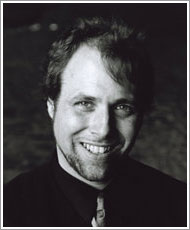 |
 |
 |
 |
 |
|
Thomas Hase, working with production designer David Gallo, evolved a unique view for lighting a production of "The Wiz". Here's his description of it:
"We looked at stills pictures of the original 1975 production and decided immediately not to go in that direction. In 1975 they had used very simple elements to change the space , such as a piece of silk to create the 'Road', We wanted our production to capture the visual perspective of today’s computer and I-Pod generation. The junkyard where the Tin Man is discovered had a broken Starbucks sign in it, for example. It was all bright, modern, primary colors, with about one hundred Vari-Lites and Martin MACs, several media servers, an LED floor and portals as well as a bucketload of stationary fixtures with scrollers."
|
|
|
|

"Emerald City as the characters cross into Oz isn't completely green but more of a green and yellow mix,
which is something unexpected. We created this look with LEDs and moving lights. But an important component was the use of R113, a superb diffuser, on the walls of LEDs on each portal. The diffusion blended out the LEDs. The portals put out a strong glow that lit the rest of the floor. We also used a lot of Rosco's E-Colour 139 in our plot. Their stability was very important, as this musical ran for over a year." |
 |

"The Wiz is a fantasy journey but it's a fantasy journey in our modern society. It's all color, no shades of gray and black and white except for Kansas. To give me that strong color we also had a hefty amount of PAR cans with standard Wybron Coloram scrollers in the air as high pipe ends. There were also four in each bay as low sidelight. The high red (R325) comes mostly from the pipe ends to color the floor. R27, the truest red there is, was then added from the low units. That wash of soft cool light forms a contrast where our characters are hiding downstage. It's the use of primaries that gave the scene, set underground, an air of danger and corruption as the characters got closer to the witch." |

"The foreground here is a parade in R325 and R27. The woman is in a spotlight created by a moving light
pointed straight down while upstage is a number of green shafts created by using banks of 600W ACLs pointed straight up. These ACLs were buried in the floor and enhanced by a fog wall just behind the RP screen, which had flown out to reveal the pipes. The green in the ACLs (Rosco E-Colour 139 with R88 added into it) against that burnt red is a very strong image. We used it often, and it's a red and a green I could not get if I had tried to mix from LED units or even moving lights. LEDs are a tool, as are the color mixing flags on a moving light, but I don't think we should forget about the other tools for color and color mixing. In this case it absolutely had to be fixed colors." |
 |

"In the last moment in Oz, in the open air with the evil forces defeated, I attempted to create a primary pastel look by using different LEDs in a mix in the portals, mixing primaries in the fixed scroller equipment and connecting with a projection screen in the background. The projection, designed by Zachary Borovay, is a searchlight cutting across green hills and a blue sky. The fixed color lighting is a yellow daylight
mixing Rosco E-Colour 104 softened by R321. This comes from offstage and is contrasted with tints from the moving lights from the other direction as well as top light moving lights." |
Additional credits for The Wiz: Staged by Joop van den Ende for Stage Holdings in Holland and directed by Glenn Casale. Miguel Humidor, costumes; Jeroen ten Brinke, sound; choreography by Anthony Van Laast. |

|

|
A partial listing of his international credits includes work for the Barbican
in London, The Abbey Theatre, The Finnish, Columbian and Dutch National Opera, as well as Opera North, UK, The Canadian Opera Company, Bavarian State Opera and Opera de Marseille. In addition, his work was seen at the Singapore Arts Festival, Luminato Festival in Toronto and the Tokyo Metro Arts Center. Thomas has created over 100
designs for theatre, opera and ballet at the Stadtheater Gissen, Germany.
In the US, he is the resident lighting designer and director for the Cincinnati Opera. He has also designed for the opera companies of Los Angeles, New York City, Seattle, Minnesota, Dallas, Portland, New Orleans and the Florida Grand Opera and Goodspeed Opera. His theatre work includes designing for the Center Stage Theatre, Alliance Tehatre, Dallas Theatre Center, Milwaukee Repertory Theatre, Repertory Theatre of St. Louis and the Maine State Music Theatre. His designs for John Doyle’s Company on Broadway and the Rise and Fall of the City of Mahagonny for the Los Angeles Opera Company have both been released on DVD.
|
 |
|

|
|
|
 |
|